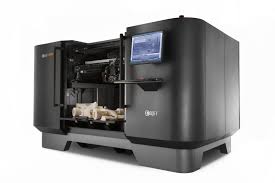
1. Consumers will come to expect Smart TV capabilities
we may see the launch of Apple’s much-anticipated iTV as early as summer 2014. Although there has been no official word from Apple on this product, many experts believe it’s only a matter of time before Apple makes the move into the Smart TV market. In an interview with his biographer, Steve Jobs was quoted as saying he finally “cracked the code” for breaking into the TV market; and this is perhaps where rumors of the so-called iTV originated. He said, “I’d like to create an integrated television set that is completely easy to use. It would be seamlessly synced with all of your devices and with iCloud. No longer would users have to fiddle with complex remotes for DVD players and cable channels. It will have the simplest use interface you could imagine.”
Many are now speculating, however, that this new product will be a seriously upgraded version of Apple TV, rather than a stand-alone smart TV. In fact, when biographer Walter Isaacson was asked (after Jobs’ passing) how close Apple was to developing a smart TV, he replied, “They weren’t close at all. These were theoretical things they were thinking about in the future.”
In any case, smart TVs continue to dominate the marketplace. According to recent research by Parks Associates, smart TV sales show no sign of slowing down; in fact, according to the report, over 1/3 of American broadband households now own a smart TV, and nearly two-thirds of people shopping for a flat-panel TV in 2014 are purchasing smart. They also found that among smart TV sales, Samsung is leading the pack.
2. Smart watches will become ‘smarter’
The concept of smart watches still appears to be one on which people are highly divided. According to research by News Republic, consumers worldwide appear to be split evenly when it comes to the desire to wear one (although respondents from Spain came in highest with 7 out of every 10 being pro-smart watch).
Earlier this year, Google got in on the smart watch game by announcing its foray into wearable technology, which they’ve named ‘Android Wear’. The software, a completely mobile version of Android’s operating system, will be incorporated into smart watches which will be offered by various big brands.
The watches (which are currently only available to the public by pre-order) will allow users access via voice control (“OK Google”), along with all the features you’d expect, like email and text. Health and fitness features are also incorporated; these will be particularly useful for watches with built-in pedometers and heart rate monitors.
Apple is also rumored to be on the brink of announcing its “iWatch,” a smart watch which will run iOS and facilitate phone calls, email, Internet browsing, and texting. Rumors are that it will also be voice-controlled, and may be announced in early September 2014.
3. Google Glass will still be in “wait and see” mode
As predicted, Google Glass still hasn’t hit the market, although it’s expected you should be able to pick up a the smart glass sometime later this year or early in 2015. Opinions are still split on whether the technology will ever be truly useful and adopted into the mainstream. Up until now, the glasses have only been available to product testers at a cost of around $1,500 per unit. According to Google, the price tag will be lower once it’s released to the general public.
Google isn’t the only one with the smart glass technology, however; it has been rumored that Samsung will be releasing its own version – known as ‘Gear Glass’ – as early as this September.
4. Other applications and uses for Apple’s TouchID will emerge
In my previous article, I predicted that Apple’s TouchID technology would expand access so it could be used in other products – not just the iPhone. At WWDC2014, Apple’s Developers Conference, it was announced that TouchID technology would be available to all developers.
AgileBits (developer of the popular 1Password app) is already taking advantage of this by using TouchID to allow users to unlock the app, as well as to log in to third party apps. This feature will be part of its update for iOS 8. Of course, we’ll have to wait a couple months to access these features, as the release of iOS8 is currently only available in beta to developers.
5. Xbox One and PS4 will blur the lines between entertainment and video gaming
Sales of the Xbox One and PS4 continue to grow, especially since Microsoft lowered the price of the Xbox One to match the price of the PS4. While some originally criticized the fact that the Xbox One would need to have a constant Internet connection to function, this turned out not to be the case when Microsoft rescinded that requirement.
Rather than the simple gaming systems of yesteryear, these offer so much more: Voice control, program guide, universal remote, and an emphasis on social game play. These features contribute to making these systems the complete home entertainment hub many had predicted. According to Brittney Brombacher, video game journalist and expert from BlondeNerd.com, “I’m seeing families buying Xbox One and PS4 and using them not only for playing family games, but also to provide entertainment for family nights in general. Kids, moms, and grandmas alike can enjoy these systems for much more than just video games. These systems are definitely ringing in a new generation of entertainment.”
6. 3D Printing will begin to revolutionize production
I predicted that the rise in popularity, along with the drop in pricing of 3D printers would move product production closer to home. The recent opening of retail store Normal shows just how on point this prediction was. The company, which produces custom 3D printed earphones, will allow consumers to upload pictures of their ears (or have pictures taken in-store), and then receive custom-fitted earphones within 48 hours.
It’s not only retailers who are utilizing the technology, however: since the debut of the world’s first 3D food printer, the US Army is in the initial stages of making plans to use the technology for producing food for its troops. 3D food printers are already being used overseas to print food for the residents of retirement communities: printing food that looks and tastes like food, but has the consistency of puree and thus decreases the choking risk.
Amazing stuff!
7. The movement toward natural language search will make search more accurate and intuitive
I predicted last year that spoken, natural language search – such as ‘Where’s the closest café’ – would continue to overtake keyword-based, typed searches like ‘café Seattle’.
However, according to Google’s director of engineering, Ray Kurzweil, we are only seeing the beginning of how computers (and Google) will eventually see and understand content: “[M]y project is ultimately to base search on really understanding what the language means. When you write an article you’re not creating an interesting collection of words. You have something to say and Google is devoted to intelligently organising and processing the world’s information. The message in your article is information, and the computers are not picking up on that. So we would like to actually have the computers read. We want them to read everything on the web and every page of every book, then be able to engage an intelligent dialogue with the user to be able to answer their questions.”
With the introduction late last year of Google’s Hummingbird alorithm, Google showed that it was serious about using their Knowledge Graph to more accurately anticipate what searchers want to know – often without even having to say it.



